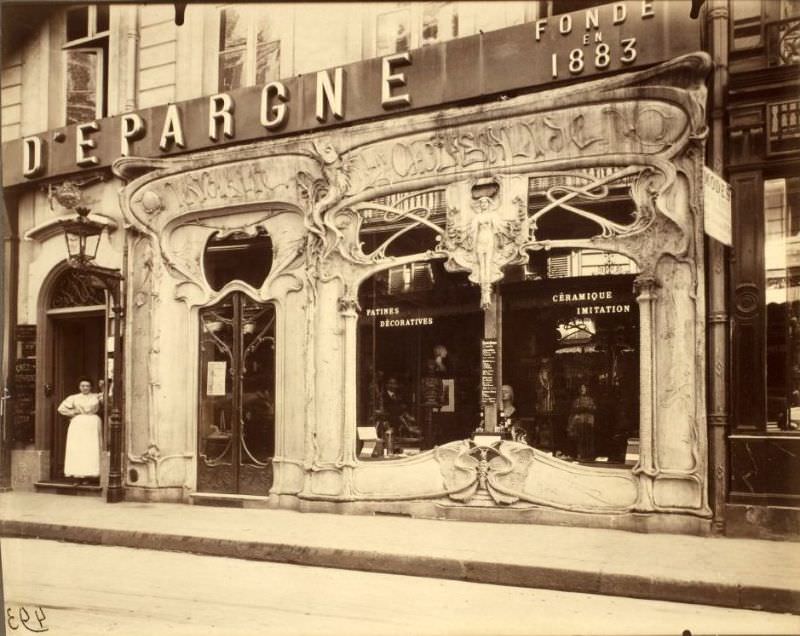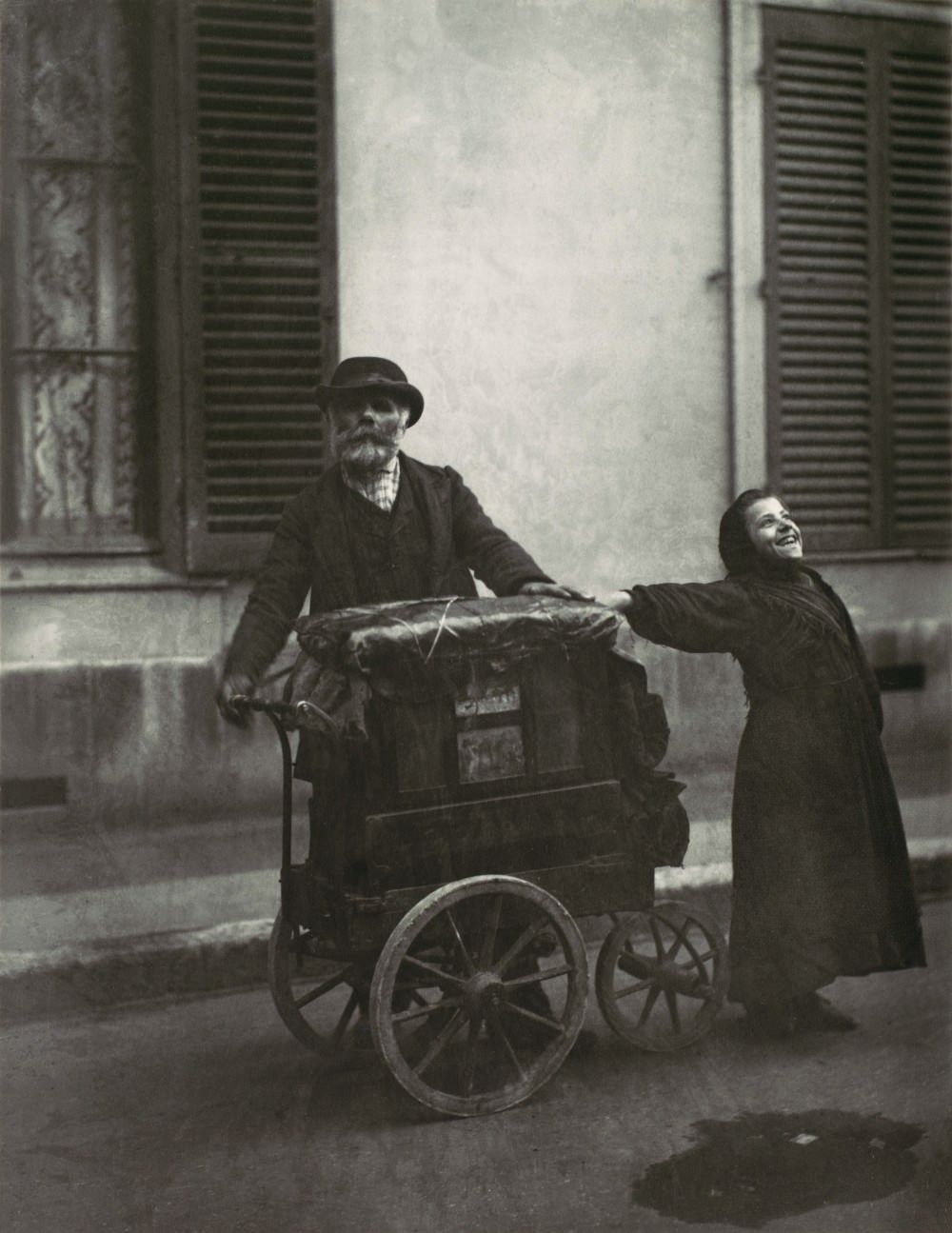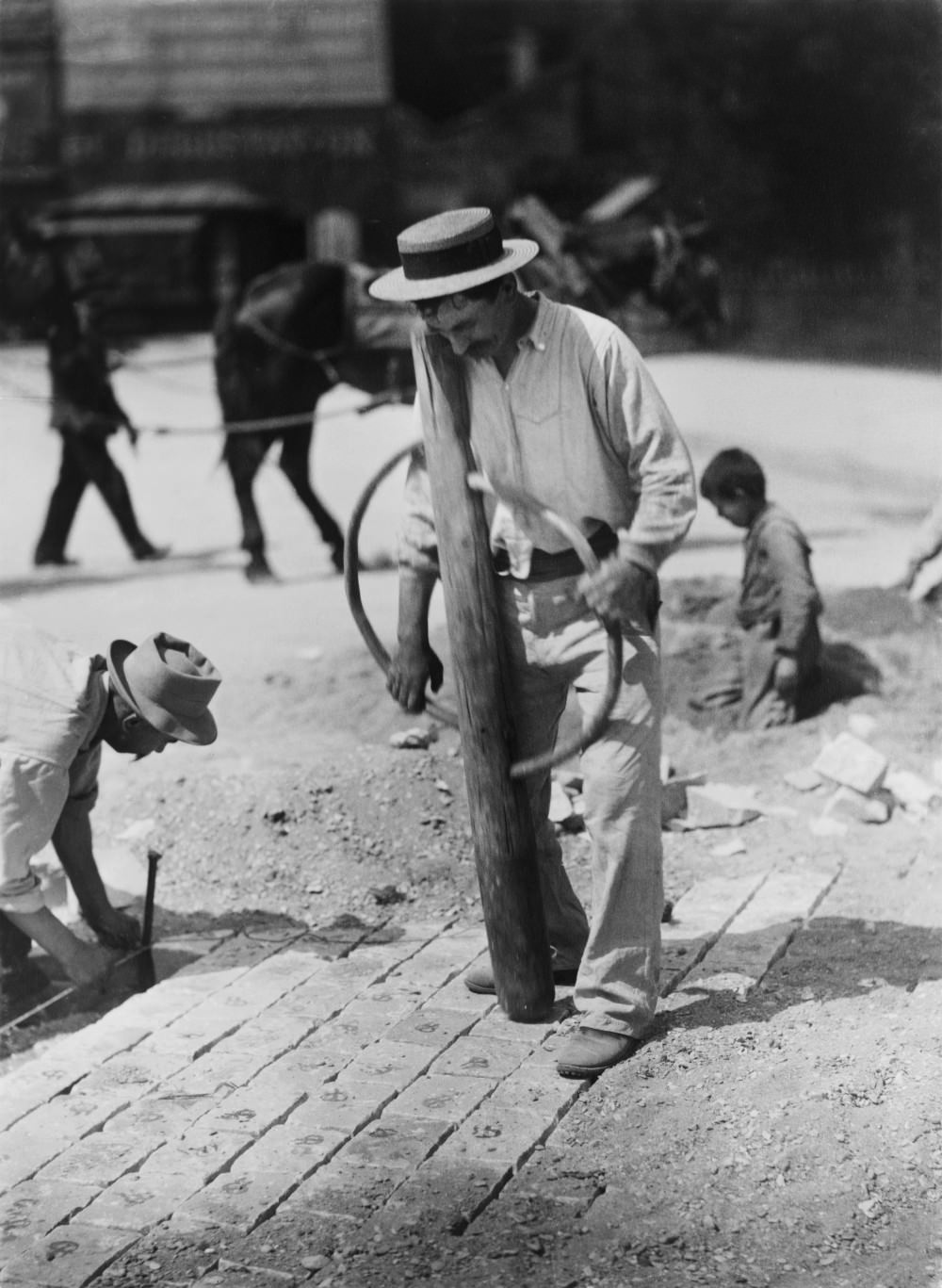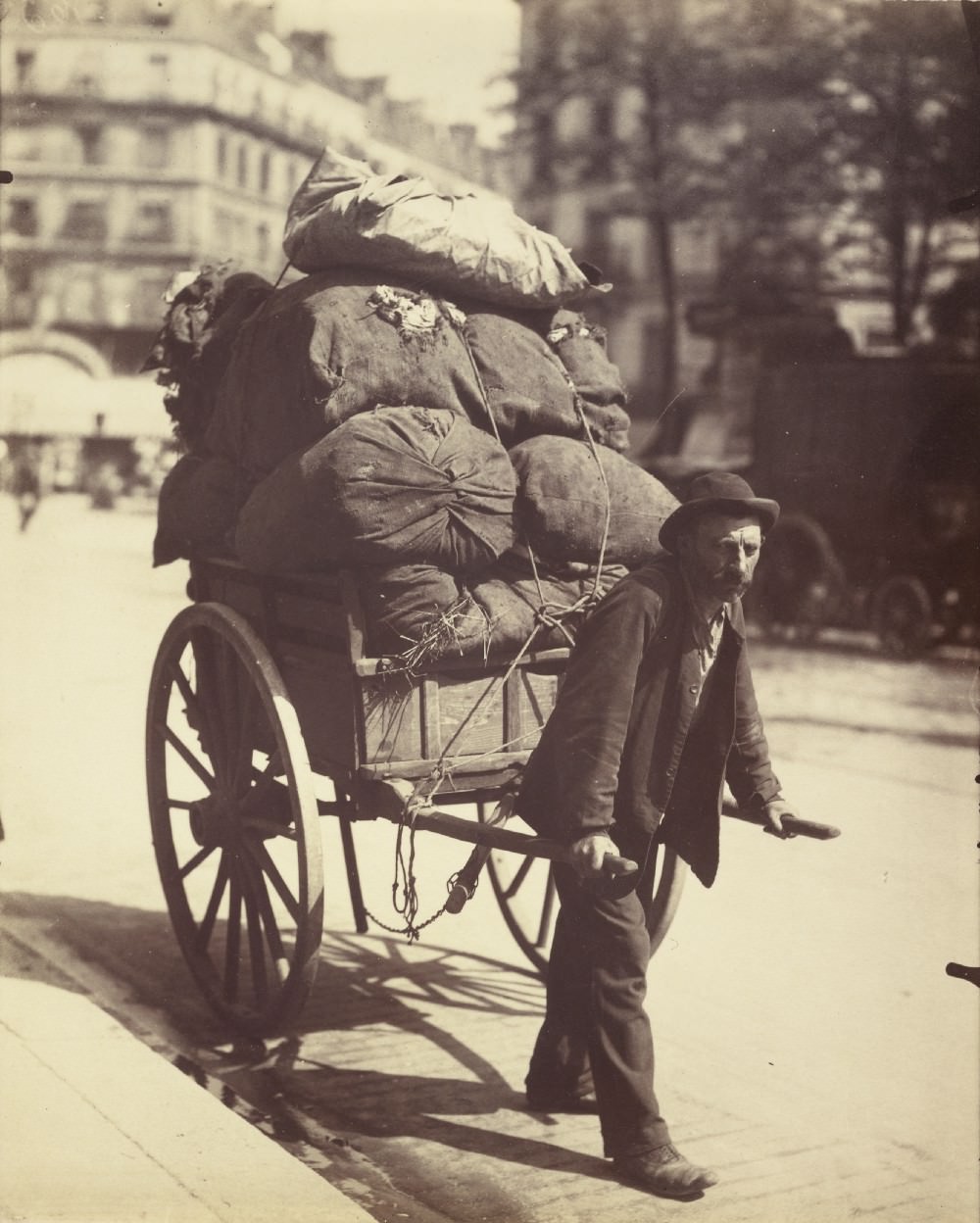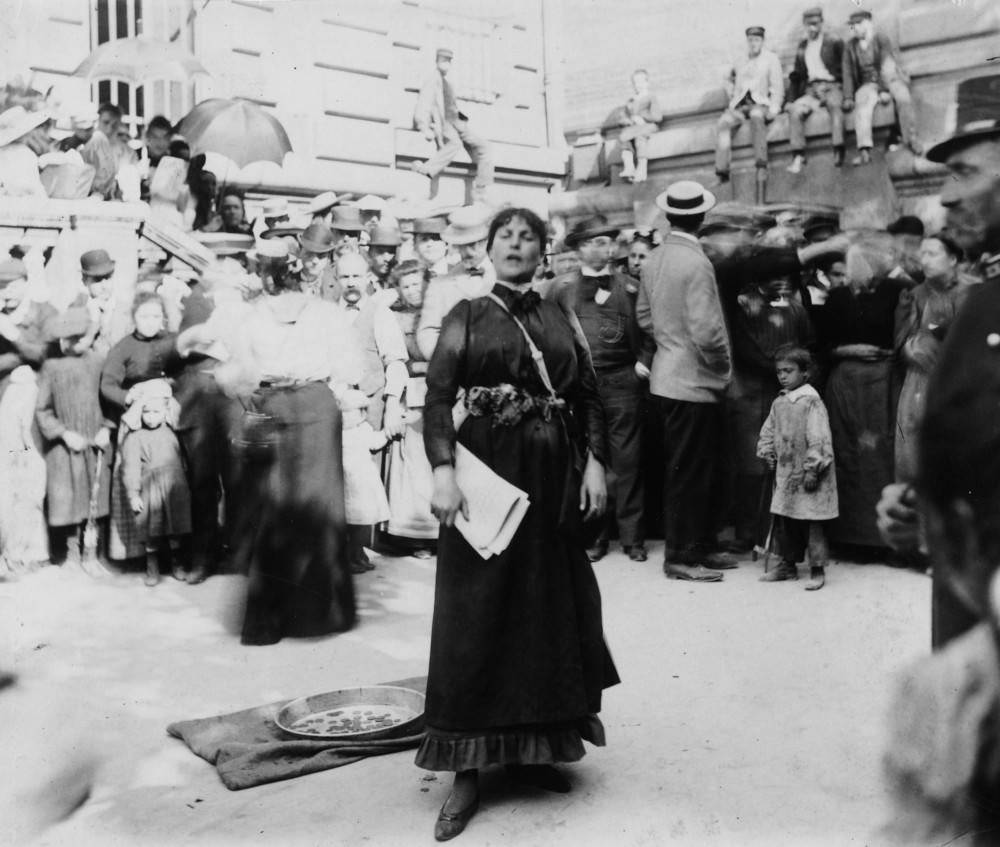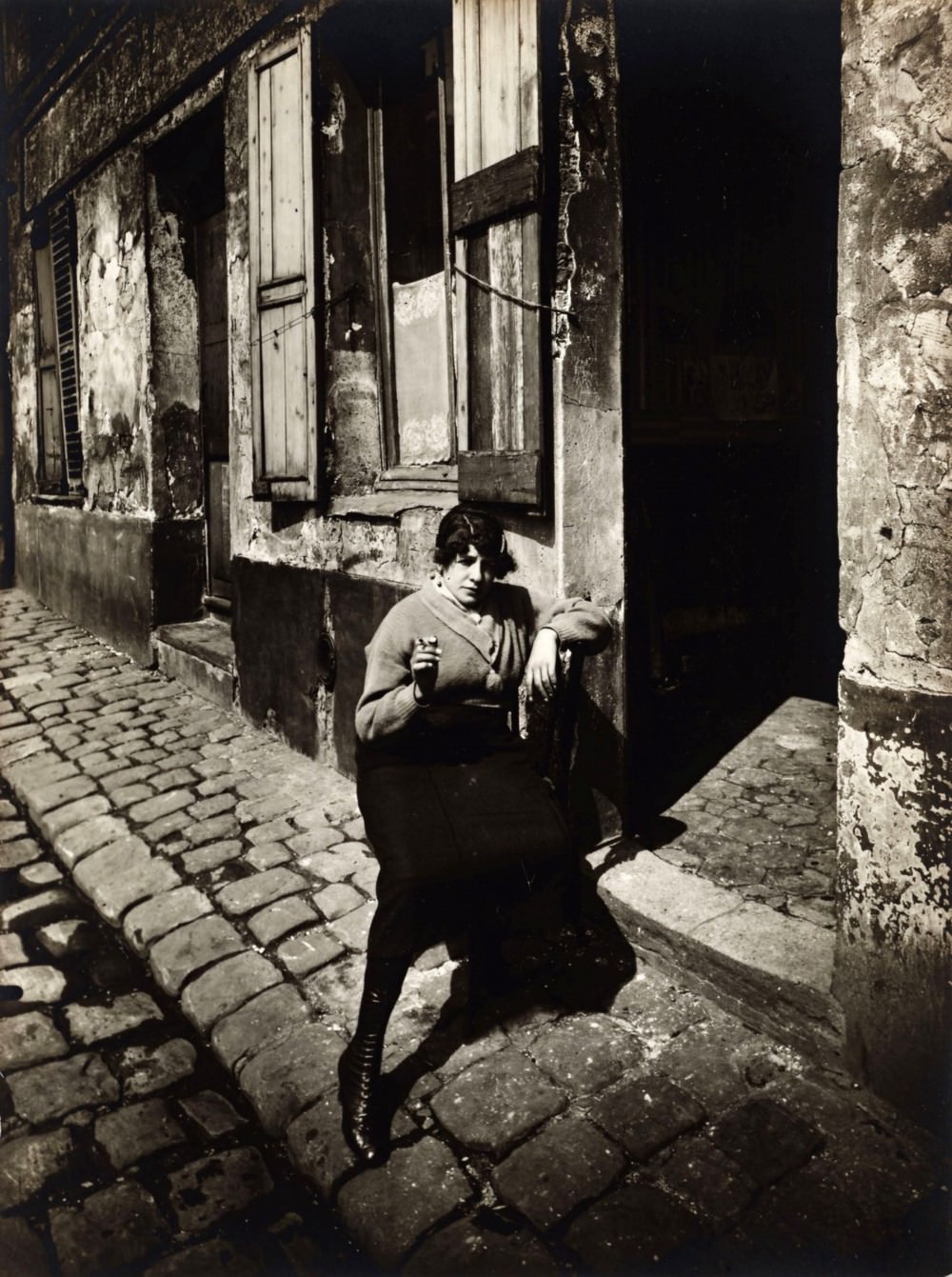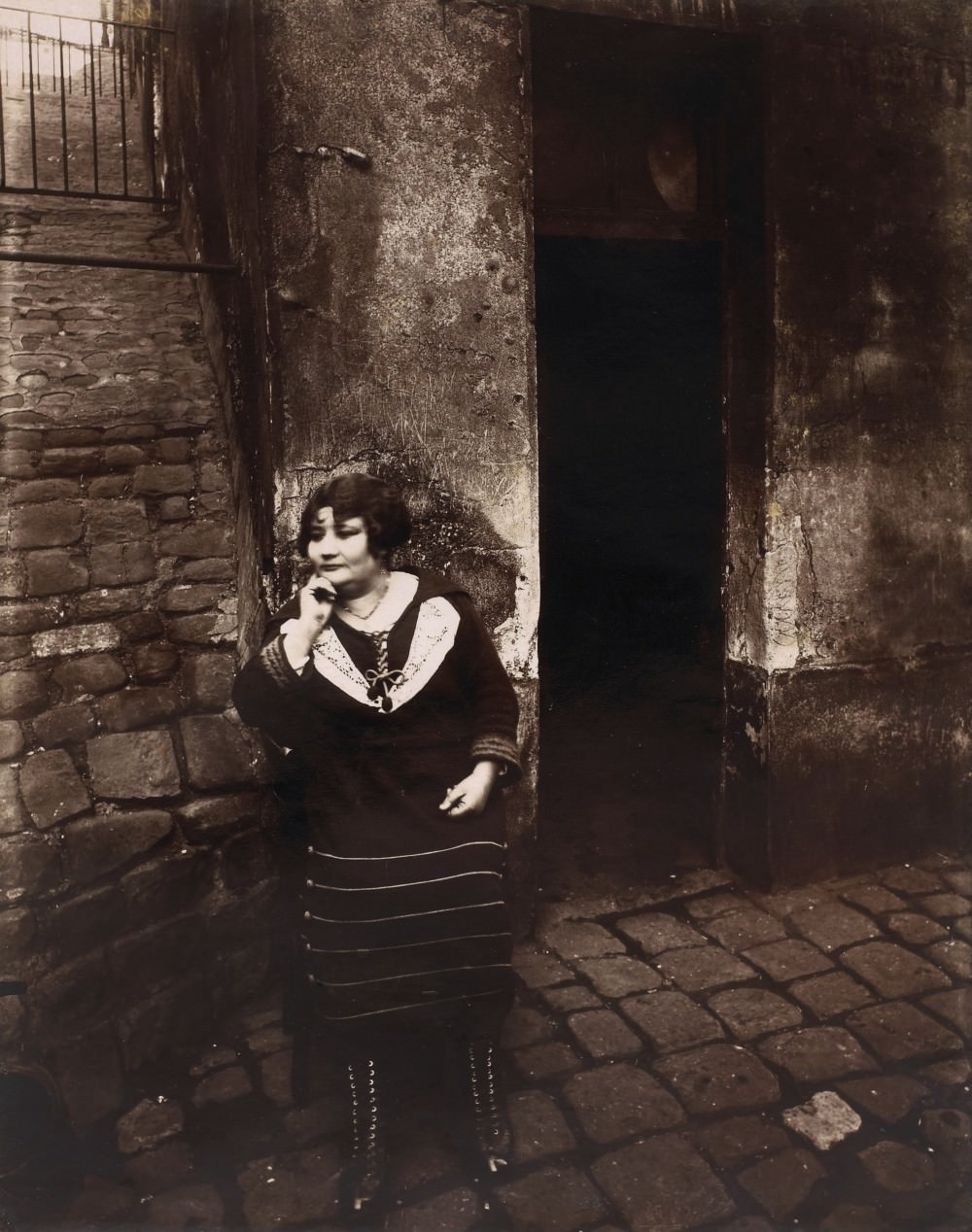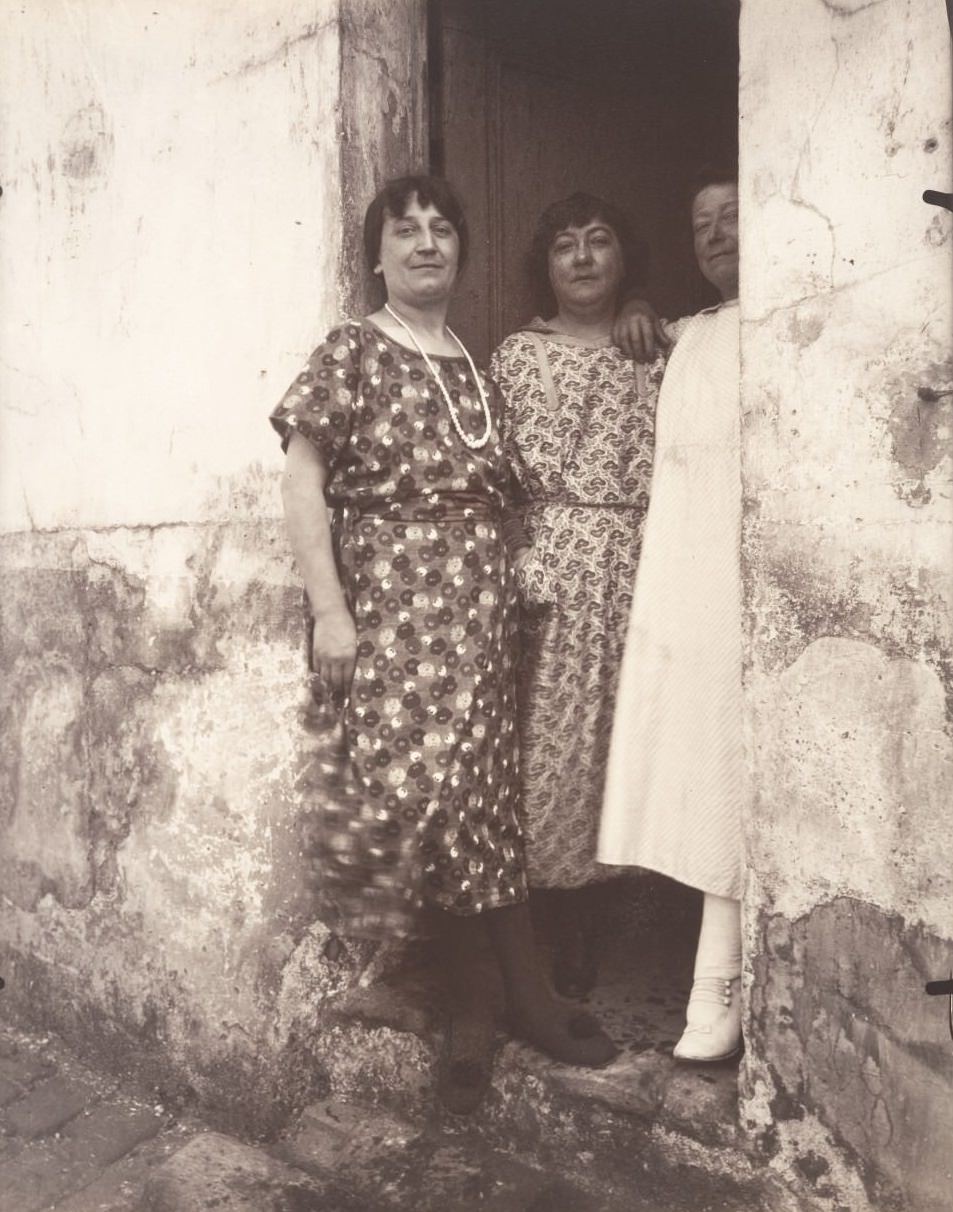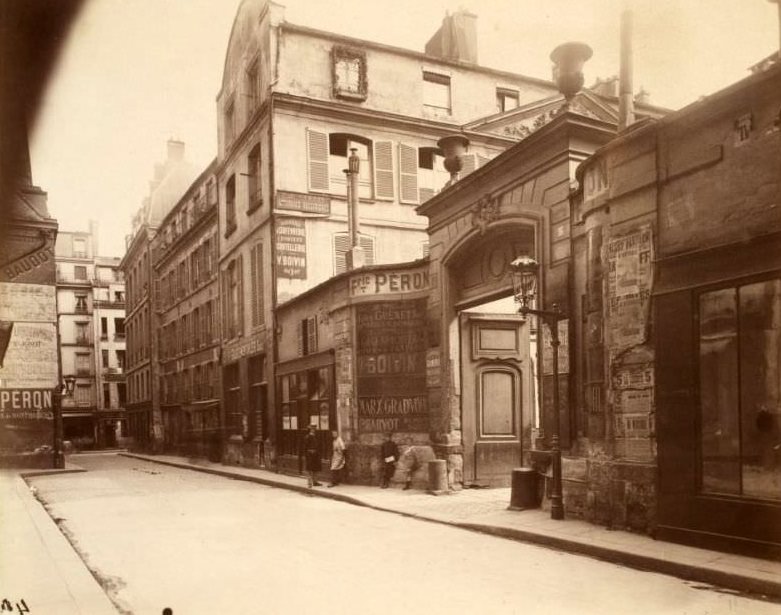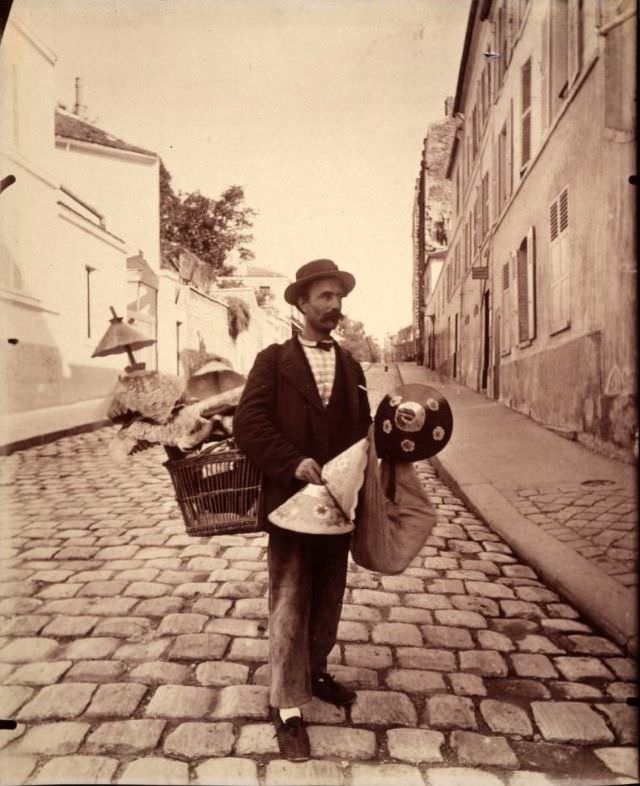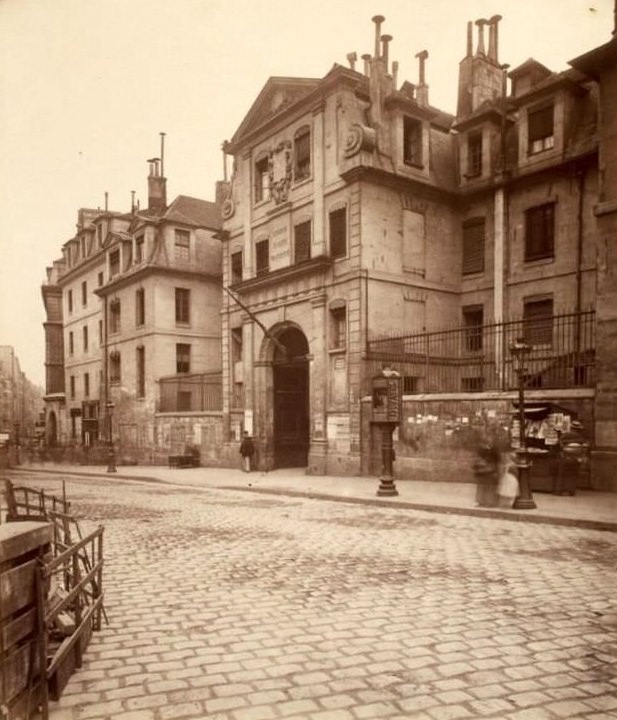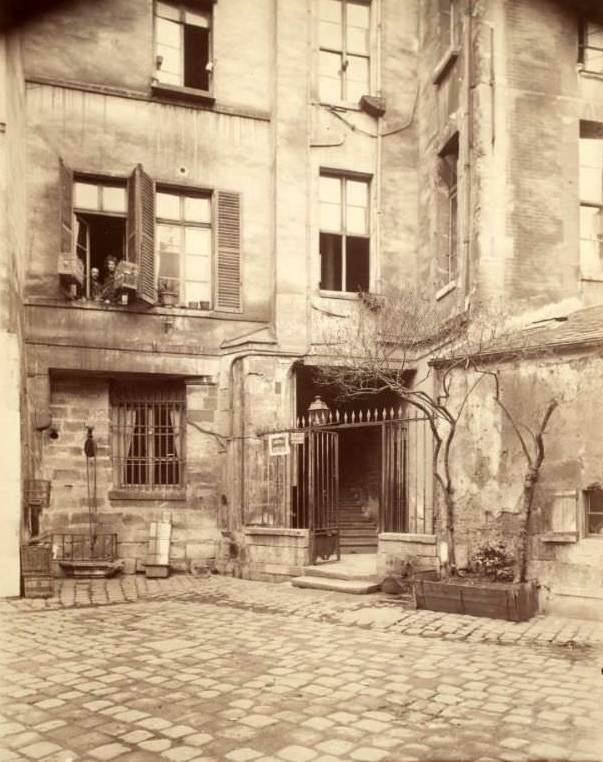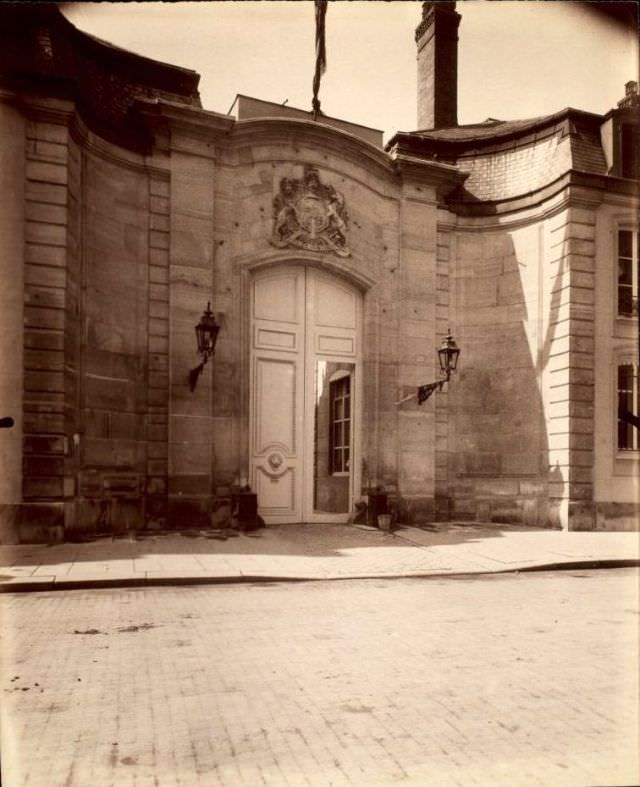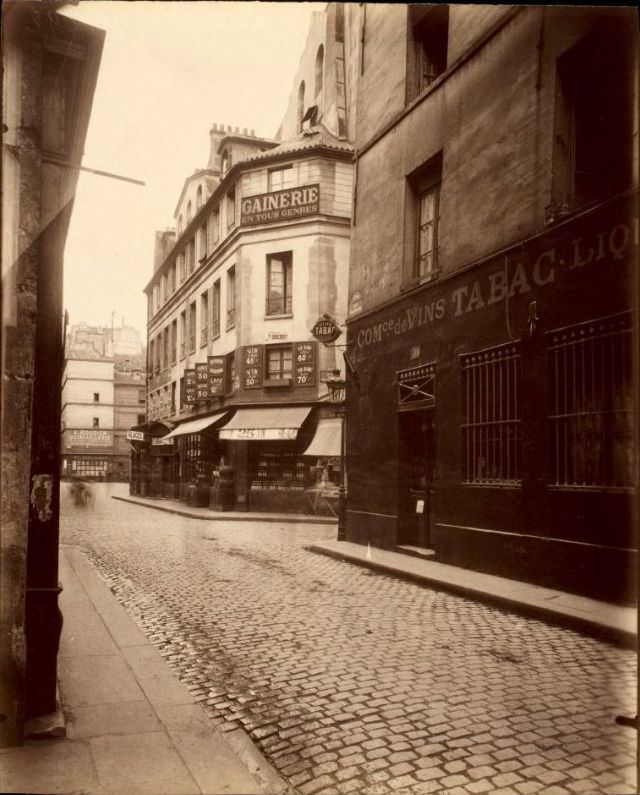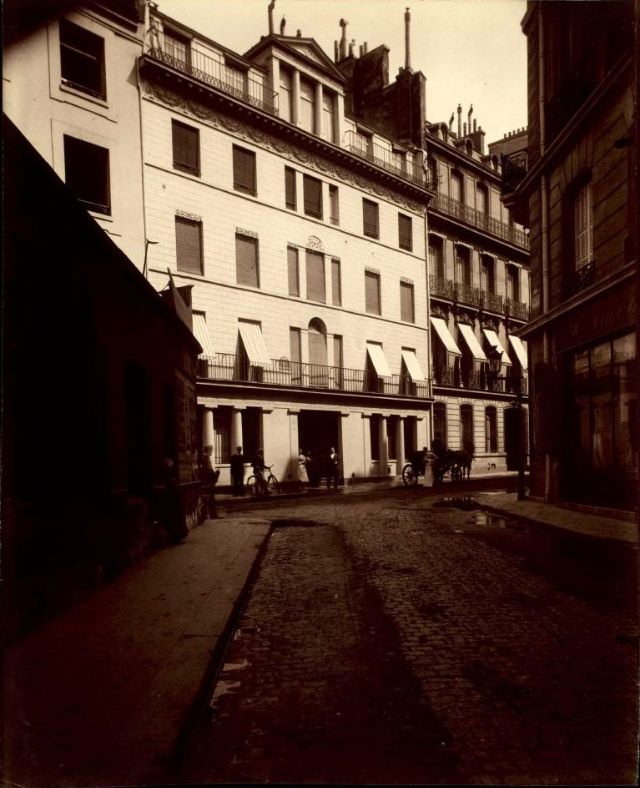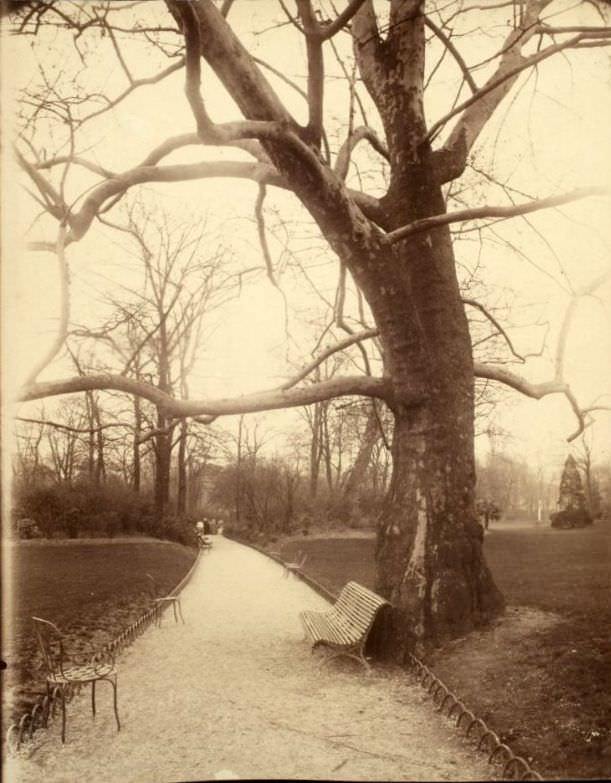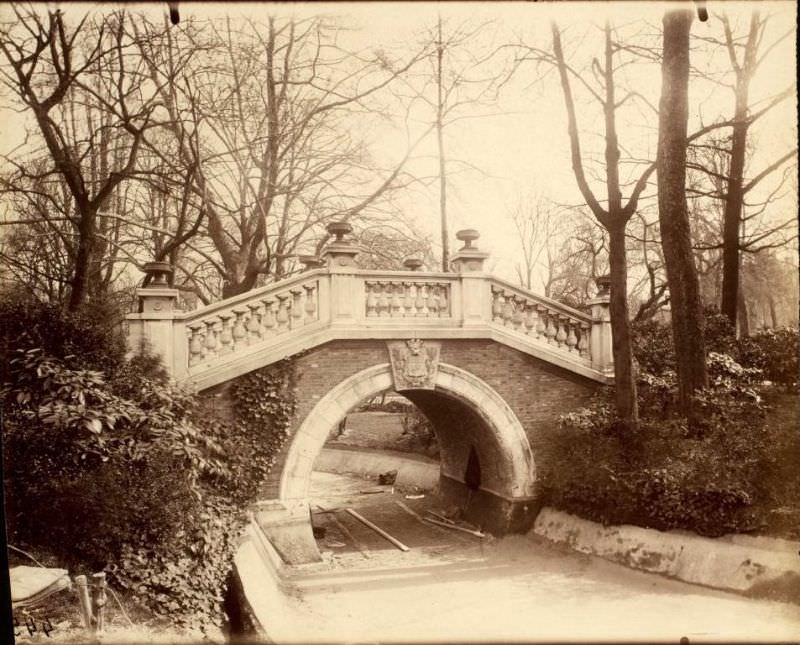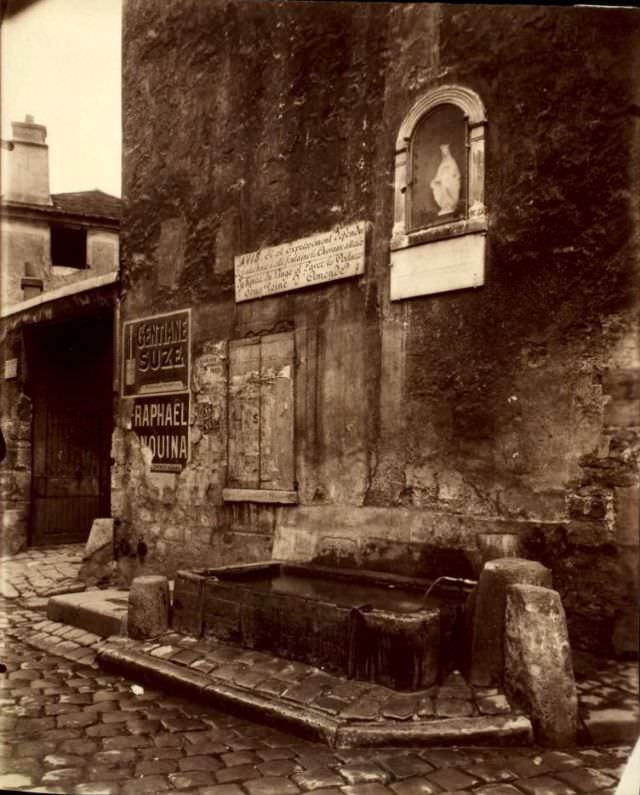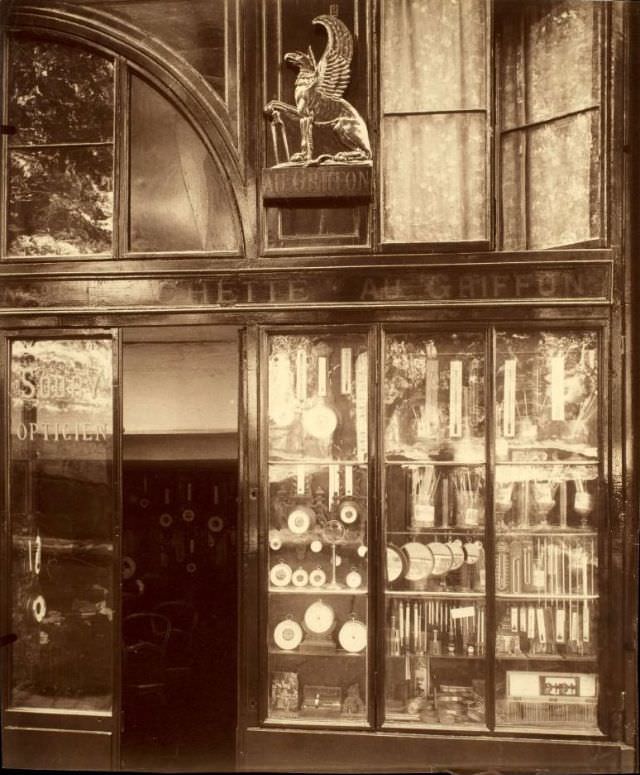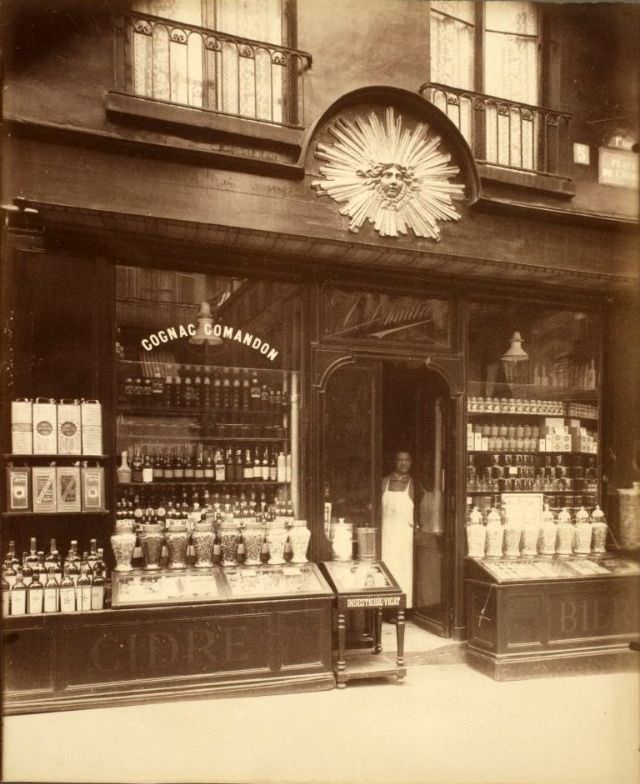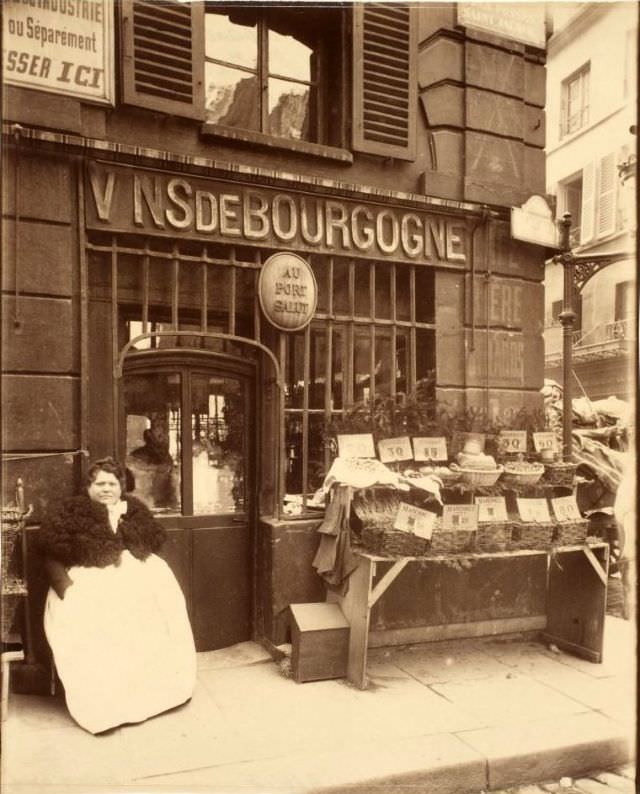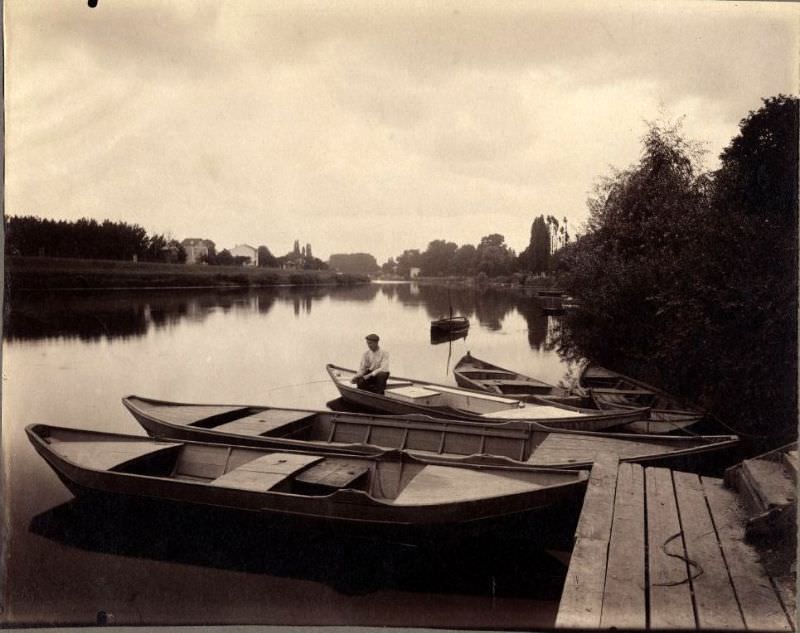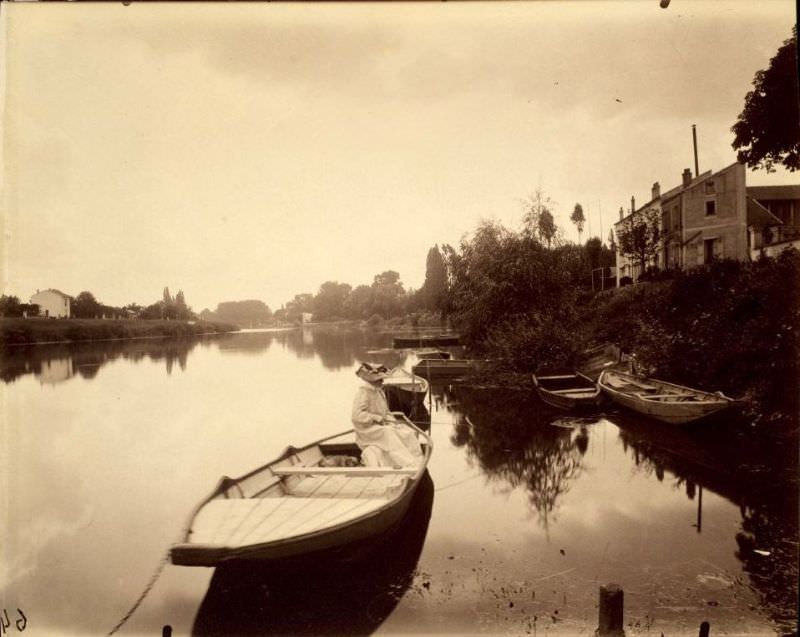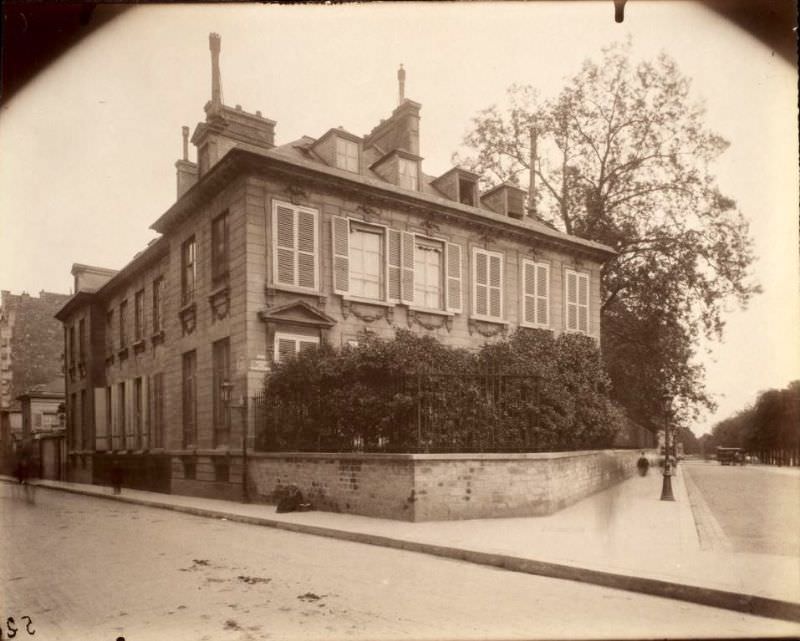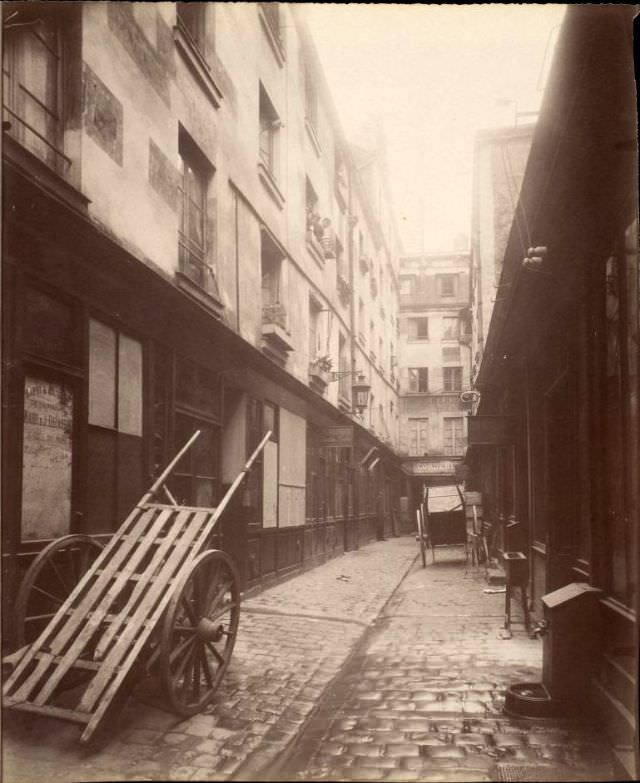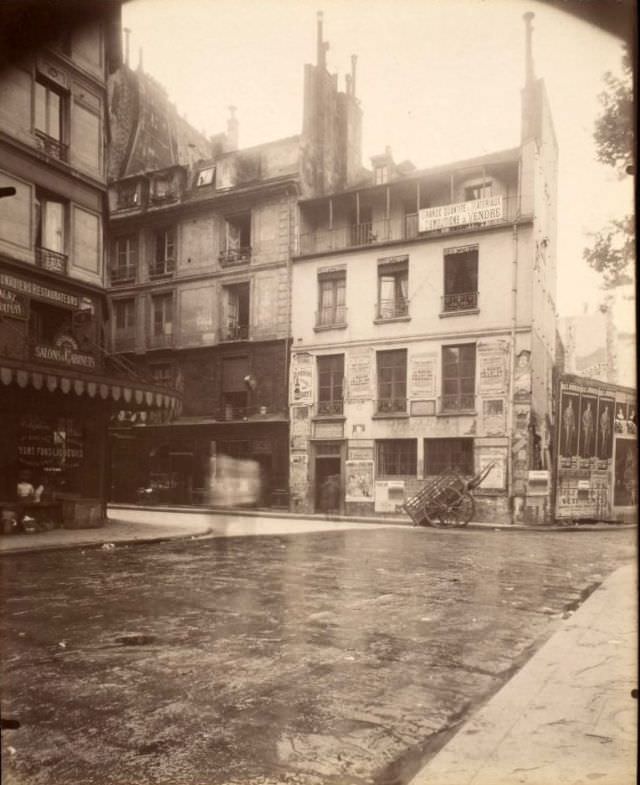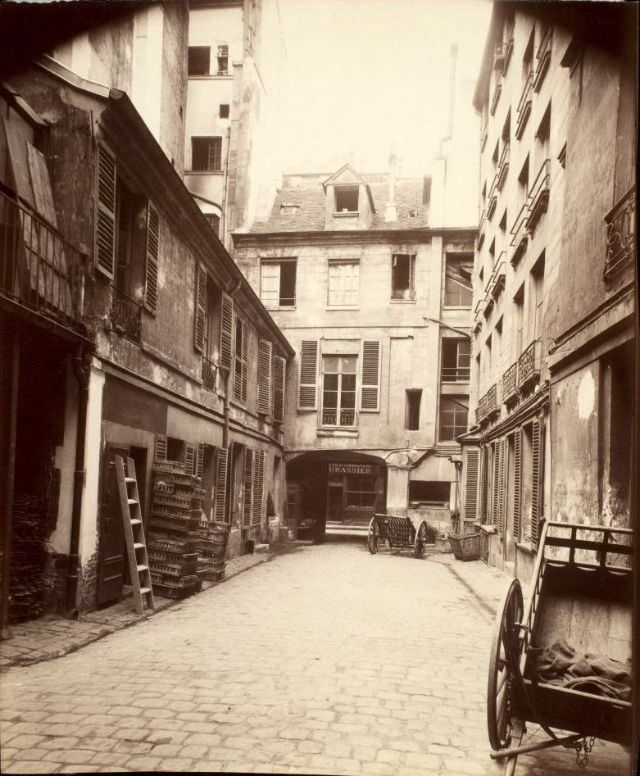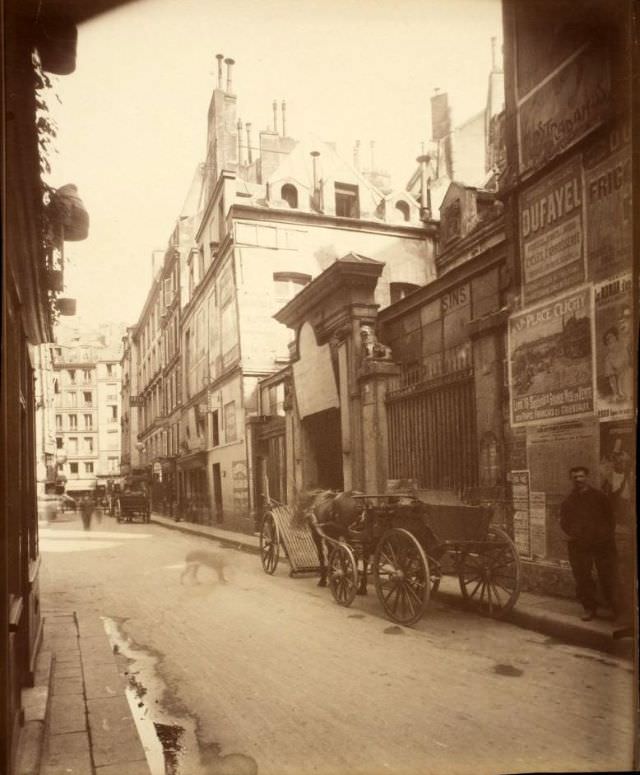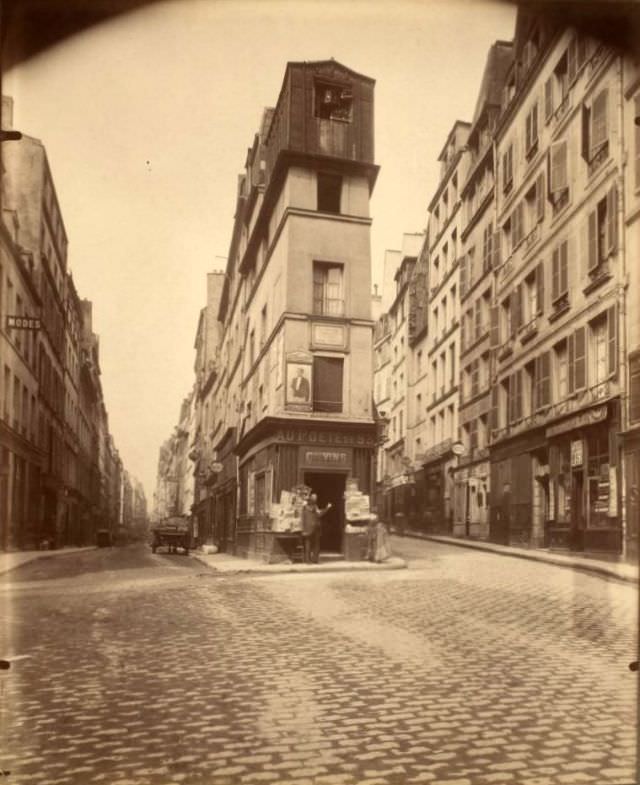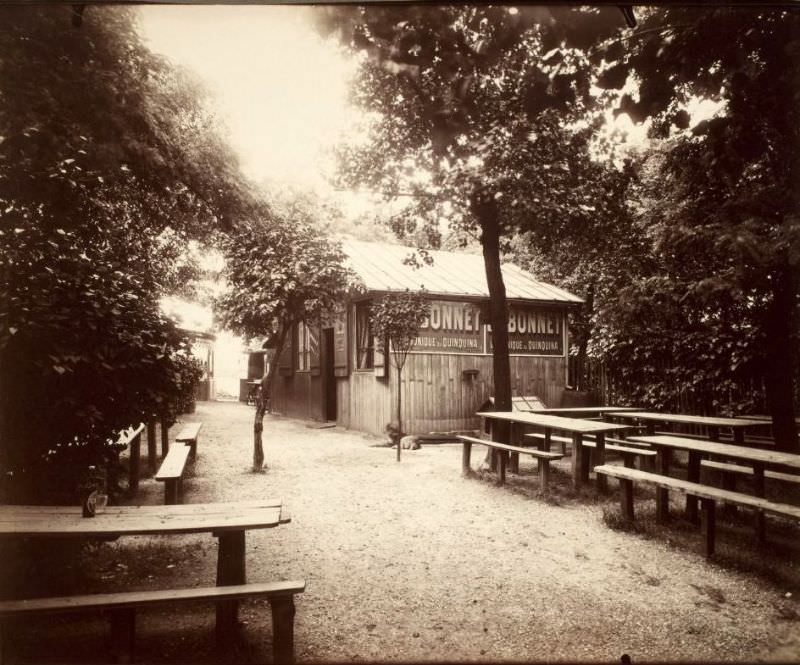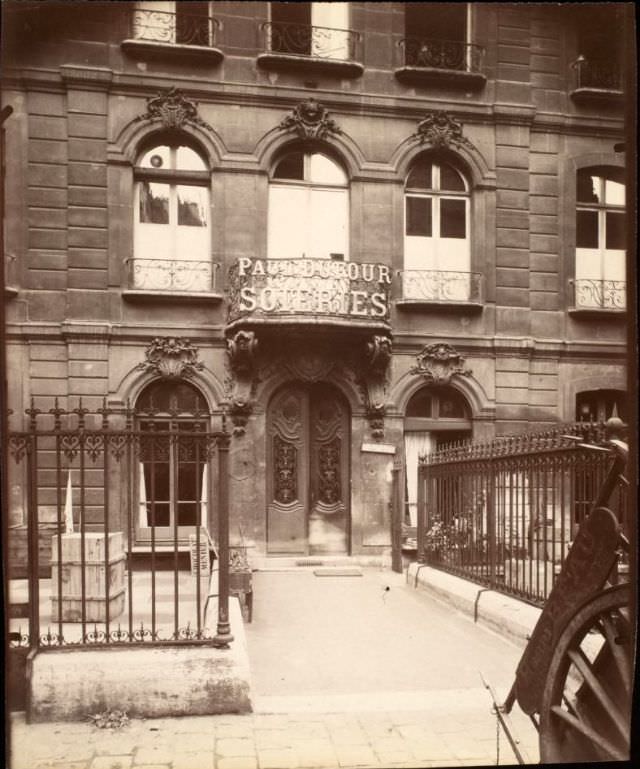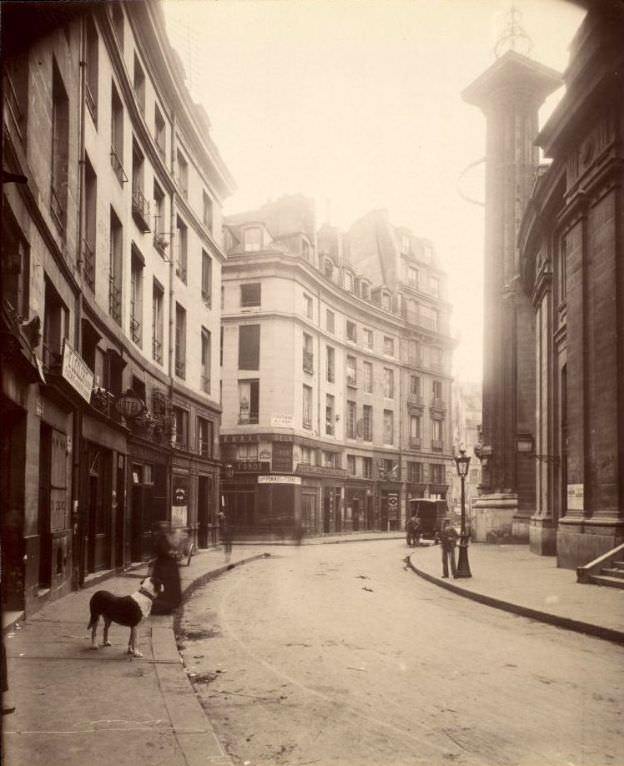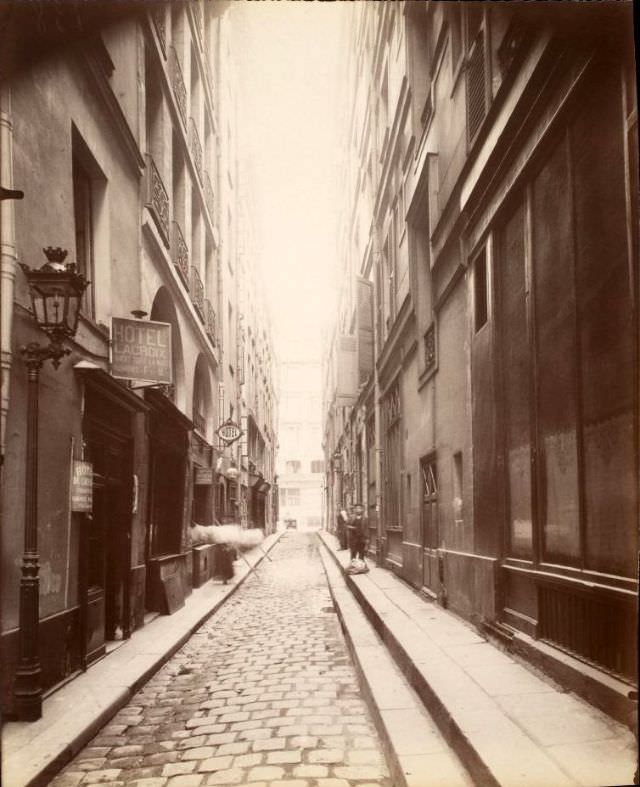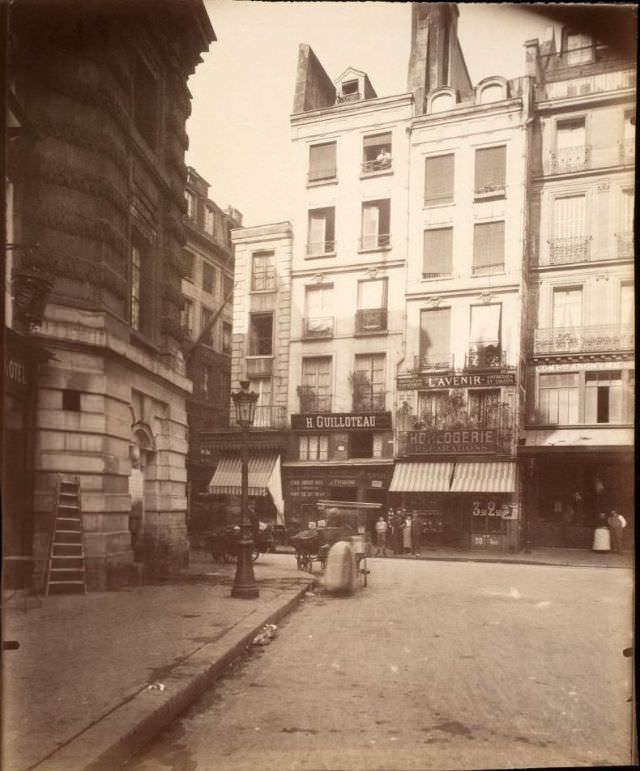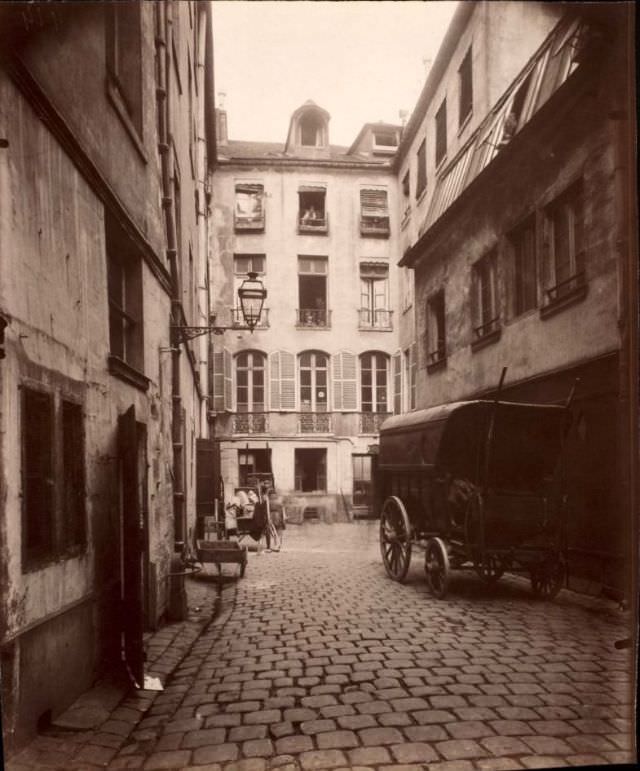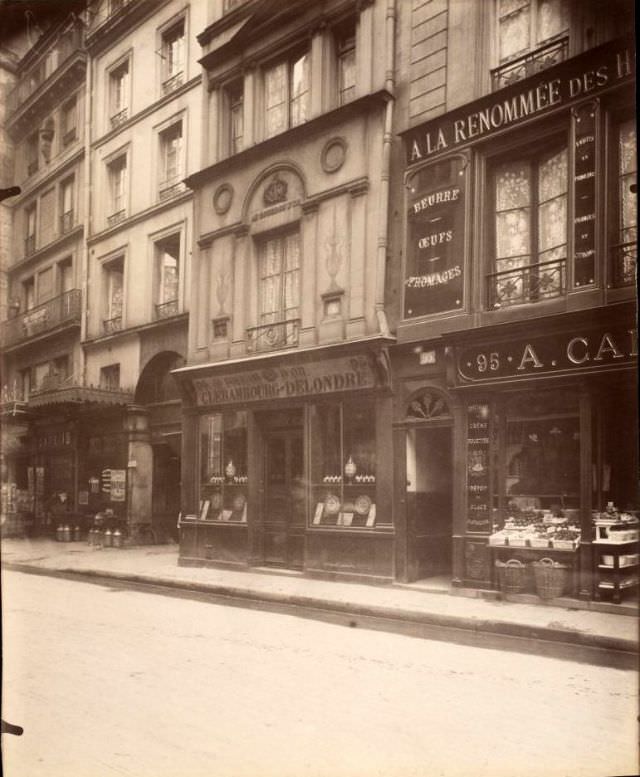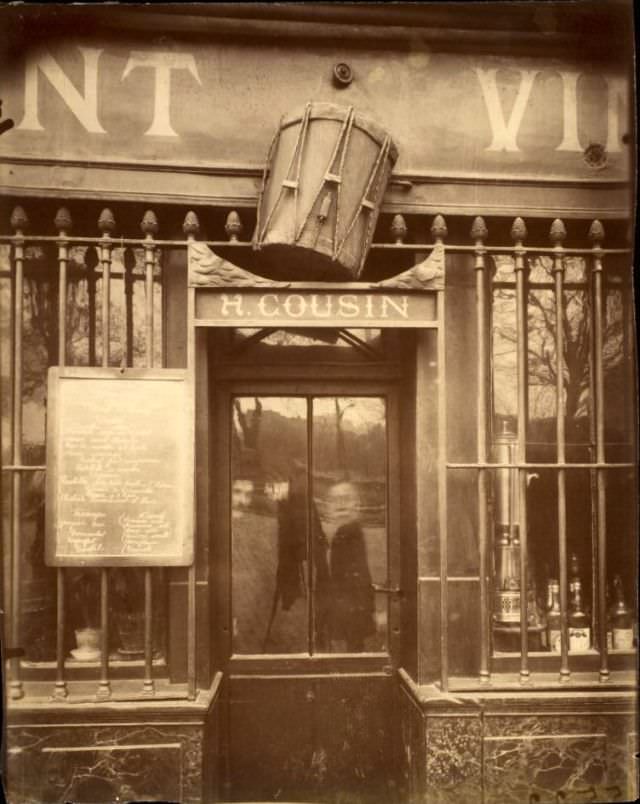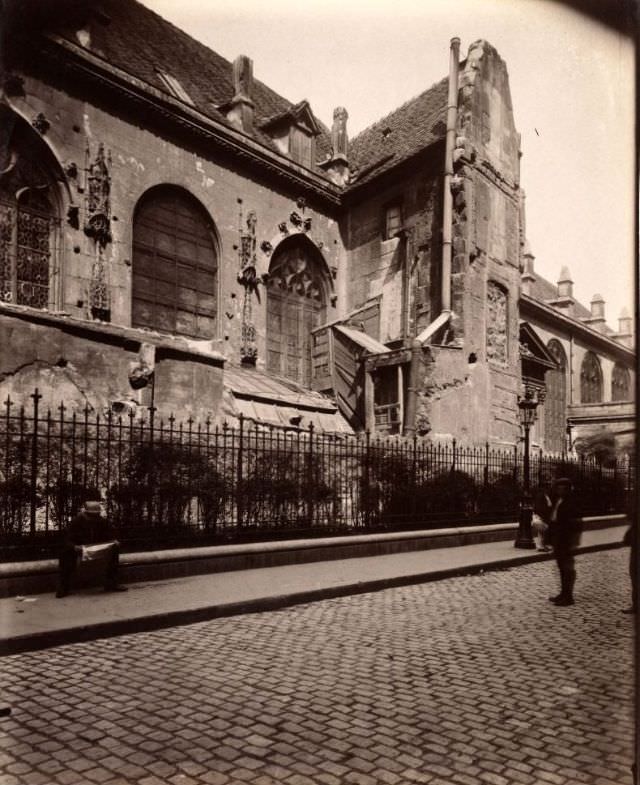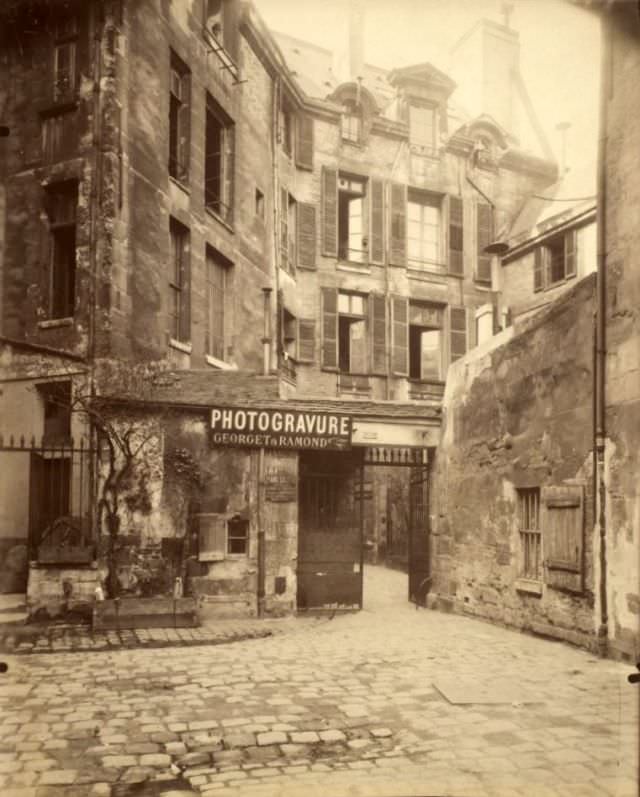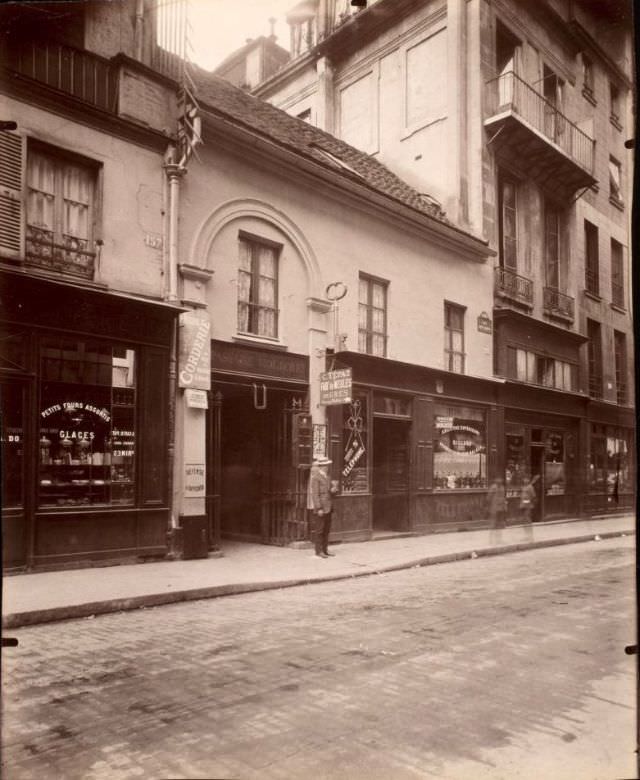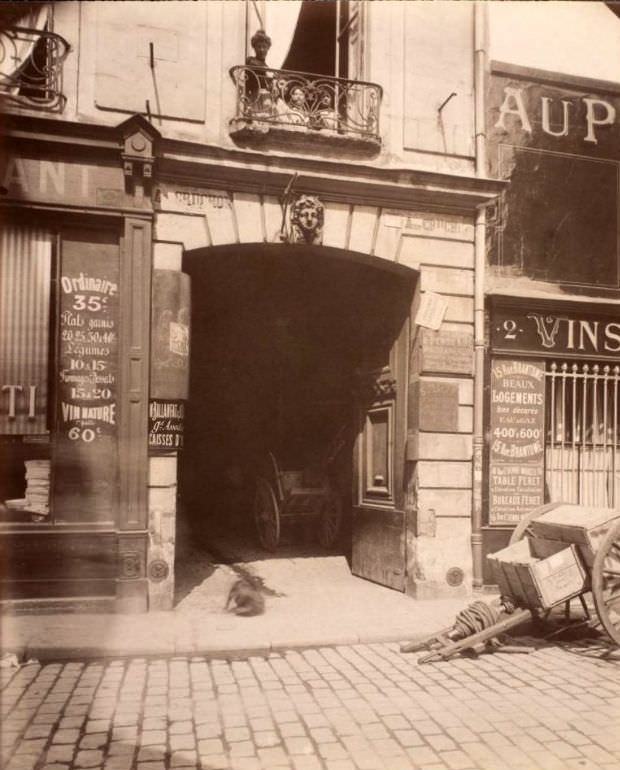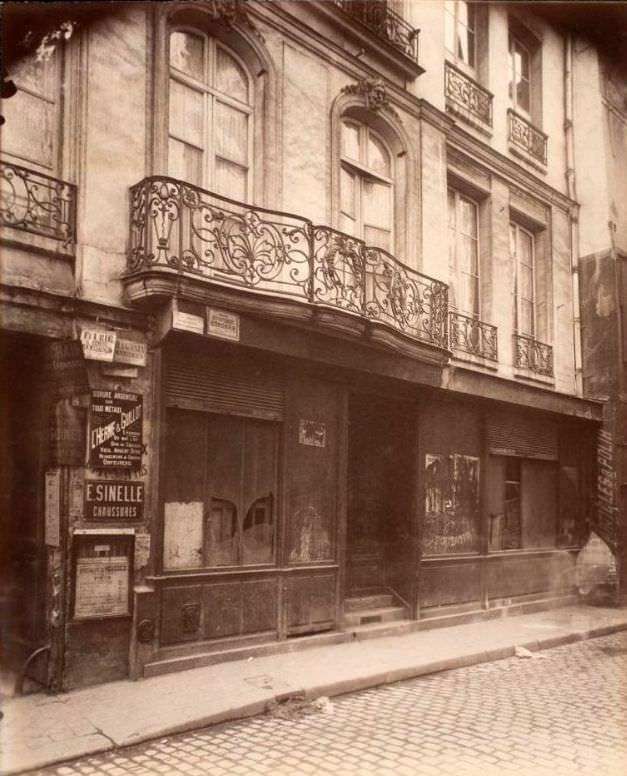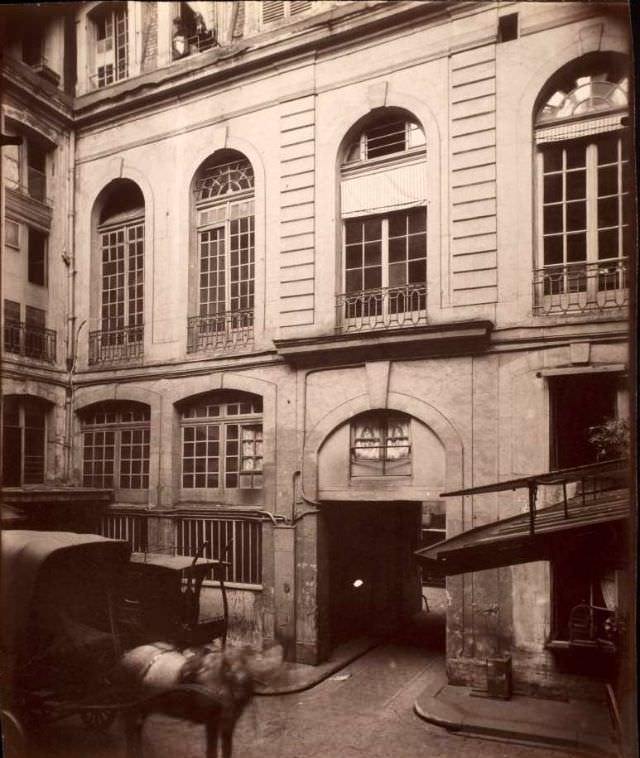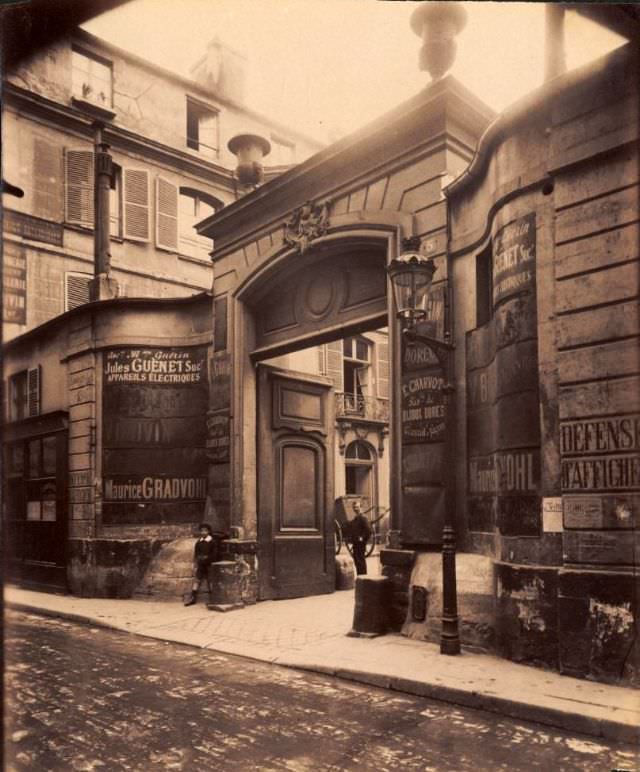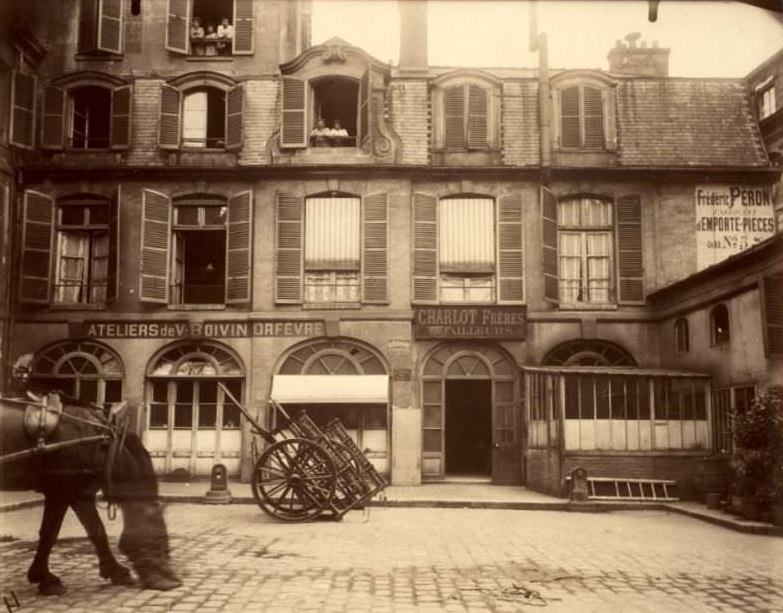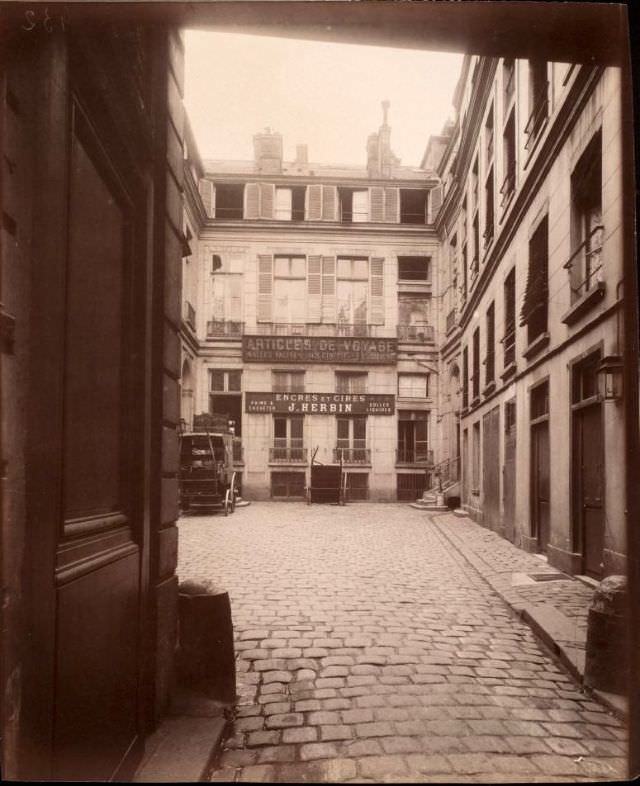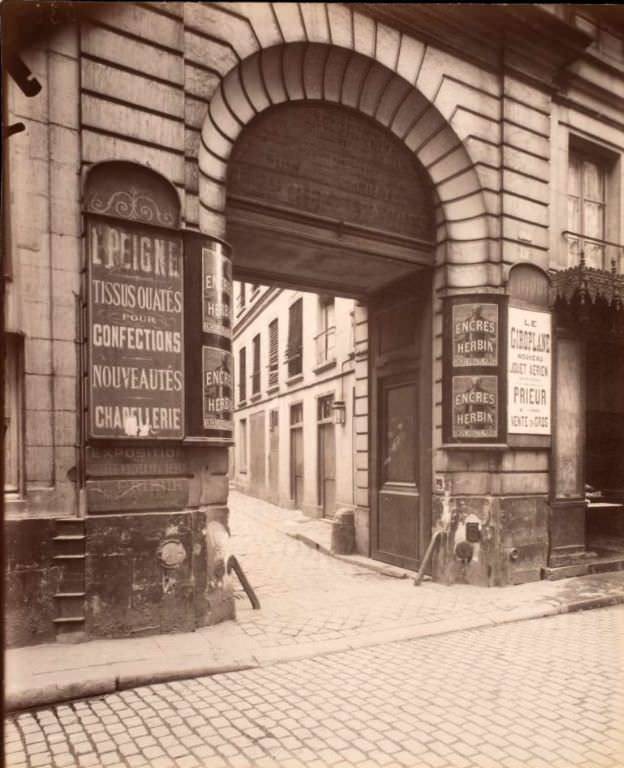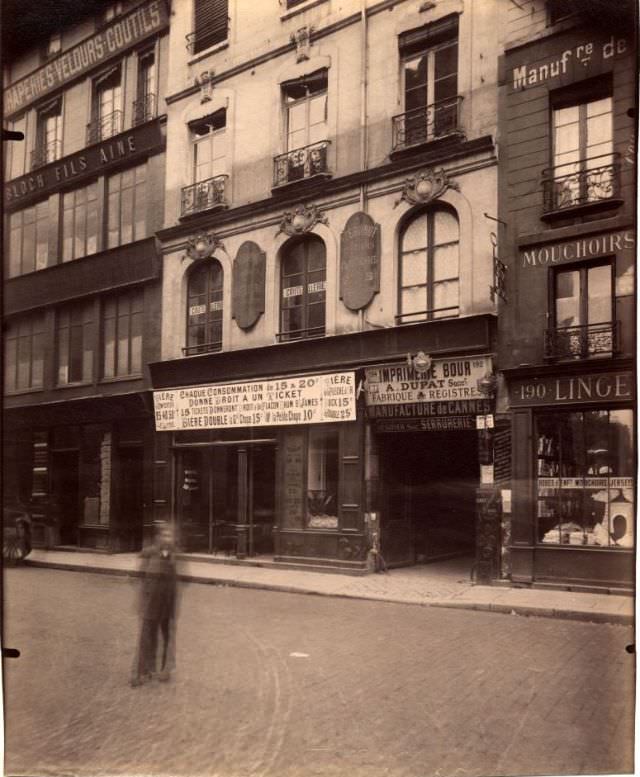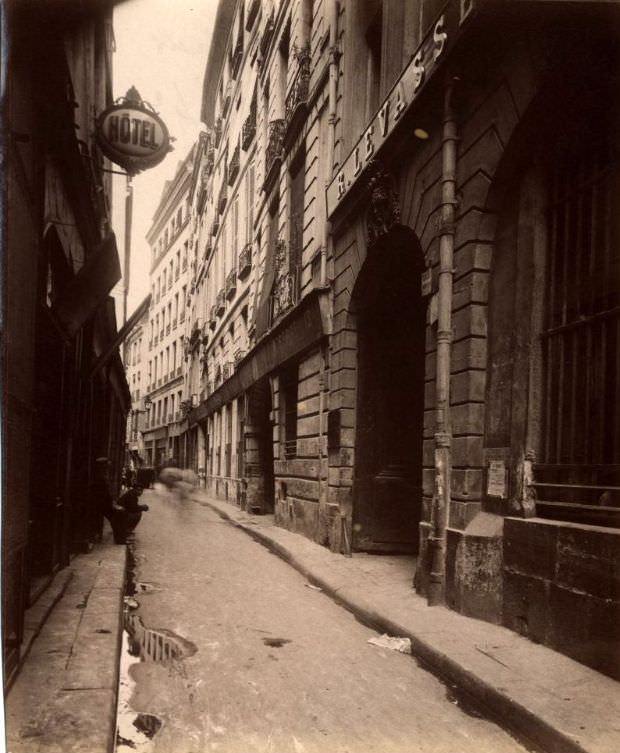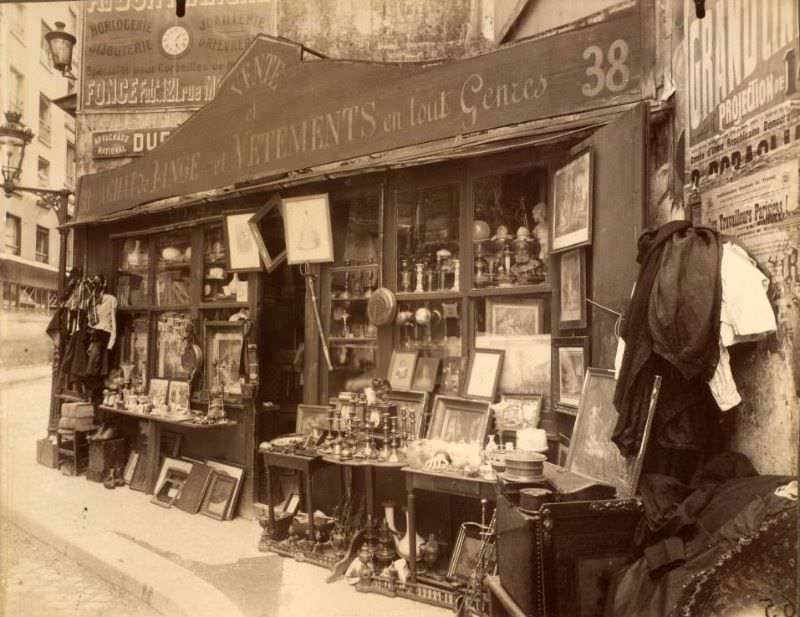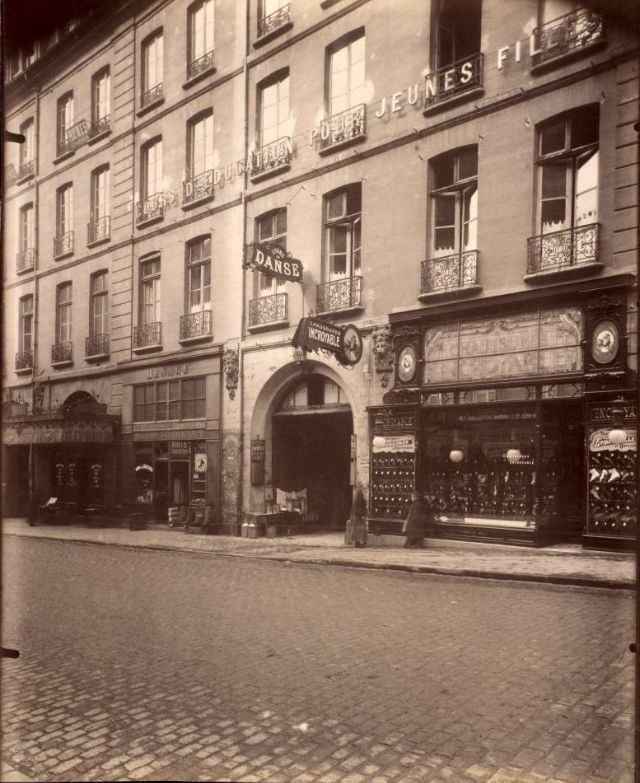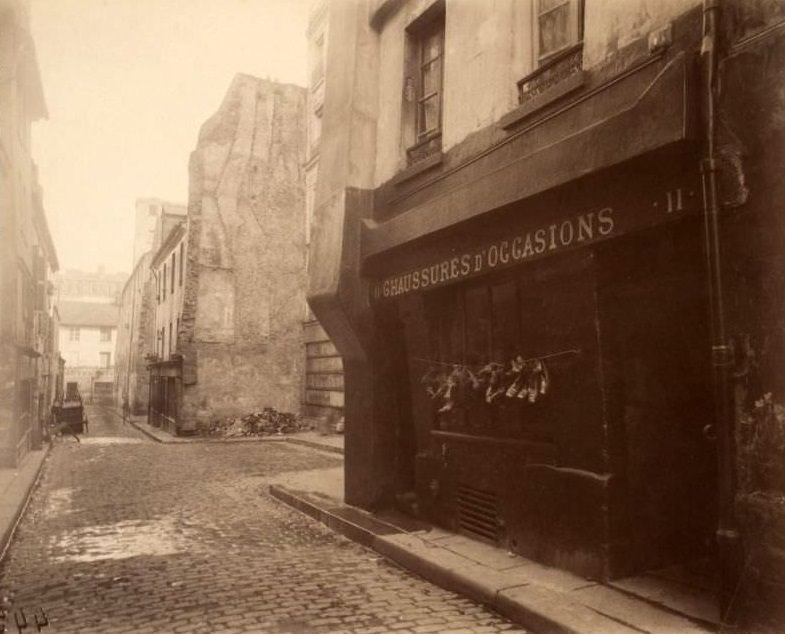Eugène Atget took these stunning historical photos that documented Paris’s architecture and street scenes before they were destroyed by modernization. During the late 1880s, Atget began photography and supplied studies to painters, architects, and stage designers. He influenced two generations of American photographers, Walker Evans and Lee Friedlander, first with his photographs of deserted streets, stairways, street life, and shop windows in the 1920s (published in La Révolution surréaliste in 1926, with a fourth showing a crowd watching an eclipse on the cover) and then with his documentary vision. The diffuse lighting in his photographs, many of which were taken at dawn, creates a feeling of space and ambience.
Paris’s medieval neighborhoods had recently been destroyed and transformed into wide avenues and public parks due to Haussmannization, a modernization campaign led by (and named after) Baron Georges-Eugène Haussmann. Atget’s interest in Paris had been a constant factor in his documentation work for other artists. Still, around 1900 that interest took center stage as he became a specialist in Parisian scenes. In the years following WW1, he mainly used matte albumen paper, gelatin-silver printing-out paper, or two types of albumen contact-printed negatives. When Atget took a photograph, he would develop, wash, and fix the negative, then assign it to one of his filing categories with the following consecutive number that he would write in graphite on the verso of the negative and scratch into the emulsion.
Atget temporarily stored his archives in his basement for safekeeping during World War I, and he almost completely stopped taking pictures. He sold thousands of negatives to institutions between 1920 and 1921. When he became financially independent, he began photographing prostitutes in Versailles, Saint-Cloud, and Sceaux parks. In 1925, while working with Man Ray, Berenice Abbott visited Atget, bought some of his photographs, and tried to interest other artists in his work. Through various articles, exhibitions, and books, she promoted Atget and sold her collection to the Museum of Modern Art in 1968.
Eugène Atget died in 1931. Four years after his death, the American photographer Ansel Adams wrote:
The Atget prints are direct and emotionally clean records of a rare and subtle perception, and represent perhaps the earliest expression of true photographic art.


